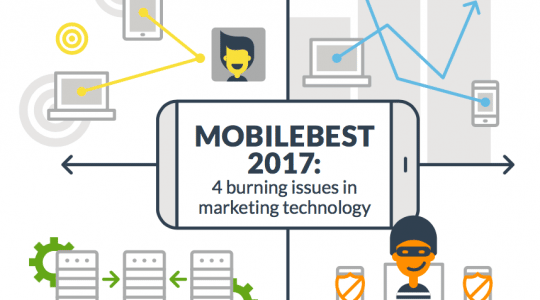Mobile isn't just another marketing channel. It is the consumer channel, and it's at the center of consumers' multiplatform universe.
Ported Post: This entry was originally published in the Artisan Mobile blog. Artisan was rebranded as In-App Marketing after being acquired by TUNE in July of 2015.
There are a number of channels marketers can use to communicate with consumers: outdoor advertising, point-of-sale displays, TV commercials and product placements, company websites, and many more. Mobile technology is also a channel for marketing activity, but it would be a mistake to lump it in with traditional marketing channels. According to Nielsen, US consumers spent an average of 34 hours and 21 minutes last December using mobile devices, and they continue to use them in places as varied as the office, the bus stop, in stores, and even in the restroom.
Even more importantly, consumers use mobile devices to extend and connect the experiences they have elsewhere. For example, a user might look up a restaurant on a laptop at home, but then use his smartphone to navigate to the right address. Or a consumer might scan an item in a store with her phone for information, but then research it in more detail in front of a computer screen later on.
Three things separate mobile from every other form of marketing. 1) The ability to geo-target – you know where consumers are located (right down to the store aisle with iBeacon) when you communicate with them. 2) It’s 24×7 – mobile devices follow consumers in time and space almost everywhere they choose to go. 3) Most importantly, it’s where consumers choose to engage with you. Mobile isn’t just another marketing channel. It is the consumer channel, and it’s at the center of consumers’ multiplatform universe.
As a whole, however, marketers haven’t taken full advantage of the personalized and contextual experience mobile apps can provide. Data on user location and past activity are enormously valuable for tailoring app content and recommendations to the individual consumer. Behavioral data should also take into account what users are doing on other platforms. Shopkick is one of the few companies that has demonstrated this well over several years by providing a way for users to check in at different locations and earn rewards. Thanks to beacon technology, the check-in process can even be automated now, allowing retailers to give consumers loyalty points and customized deals based on geographic location.
Mobile app analytics are a gold mine of information, and marketers can leverage that data across every platform and consumer point of contact. Because mobile is the center of a consumer’s multiplatform universe, it’s also a gateway to every other marketing and communications channel. What happens on mobile doesn’t stay on mobile; it has an impact everywhere. And because of that, the mobile channel creates new opportunities for engagement and for delivering personalized content and experiences… online, on the go, and everywhere in between.
Author
Becky is the Senior Content Marketing Manager at TUNE. Before TUNE, she handled content strategy and marketing communications at several tech startups in the Bay Area. Becky received her bachelor's degree in English from Wake Forest University. After a decade in San Francisco and Seattle, she has returned home to Charleston, SC, where you can find her strolling through Hampton Park with her pup and enjoying the simple things in life.




![MobileBest: Why Mobile-First Is Not Enough [Forrester Report]](https://www.tune.com/wp-content/uploads/2014/05/10271381_567497496692301_6627834864492579971_o-540x300.jpg)
Leave a Reply
You must be logged in to post a comment.